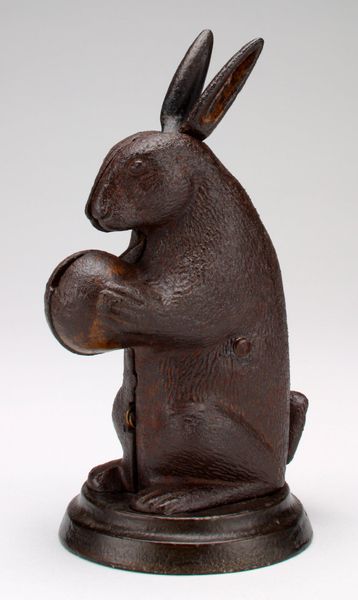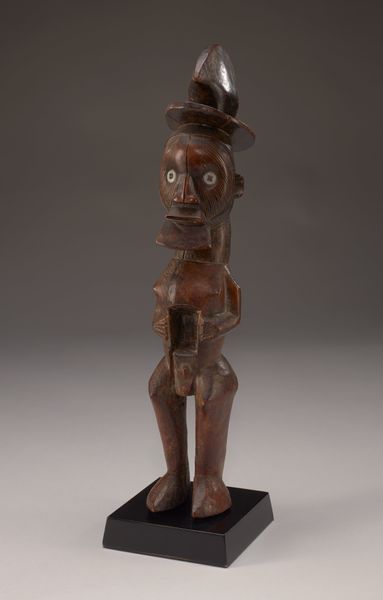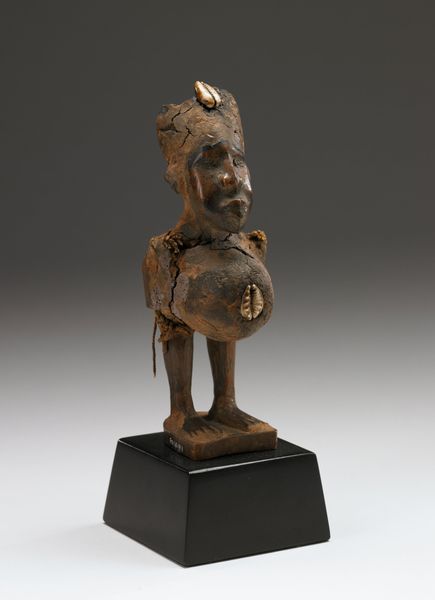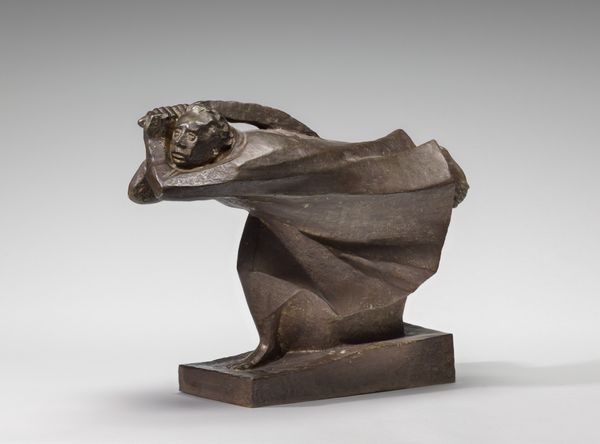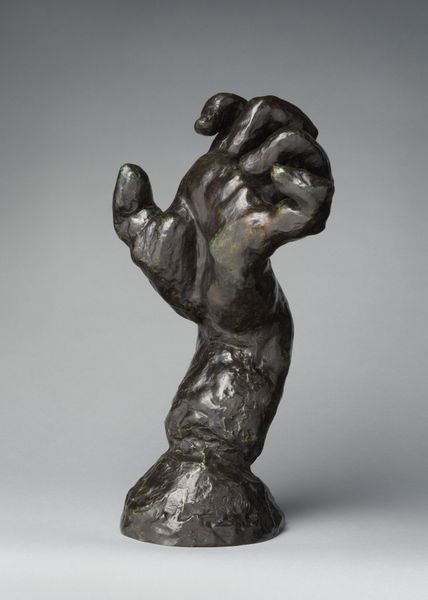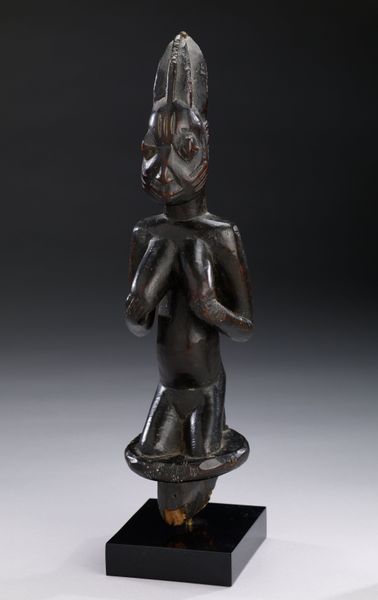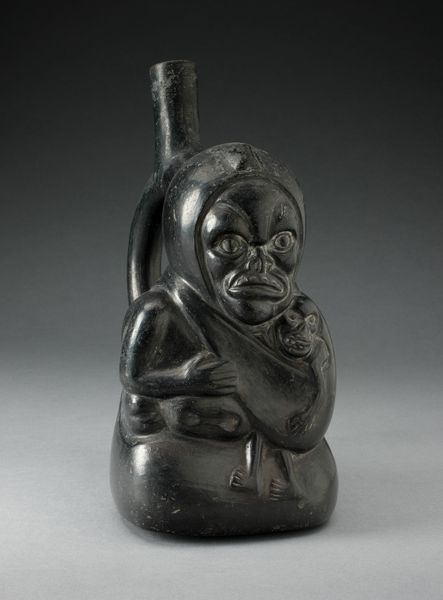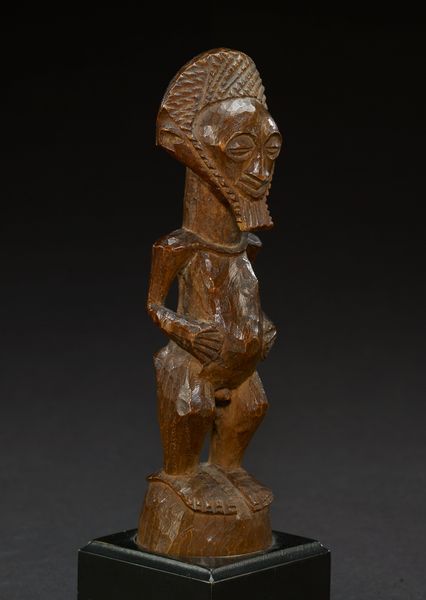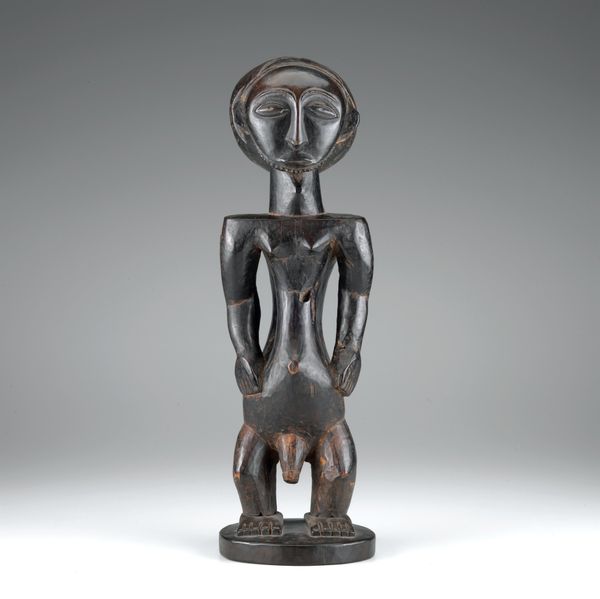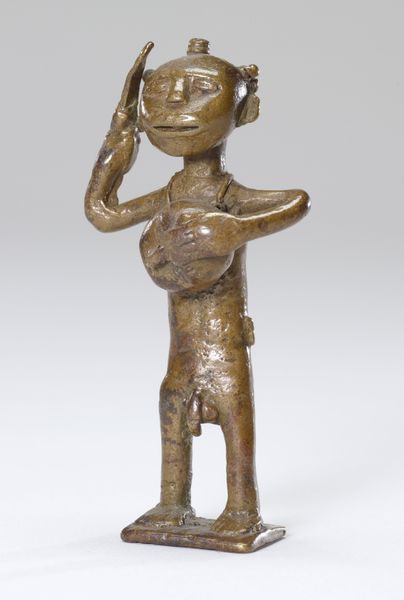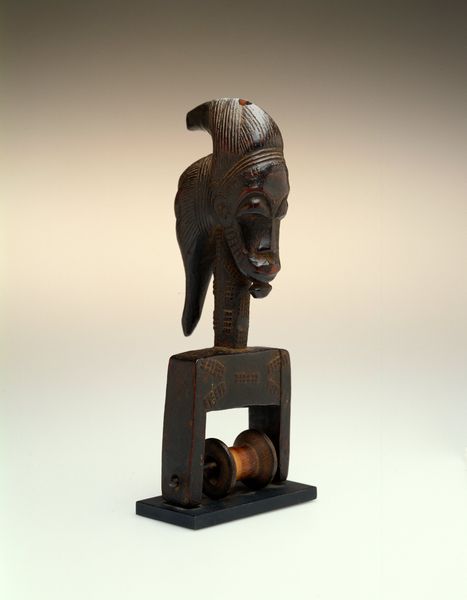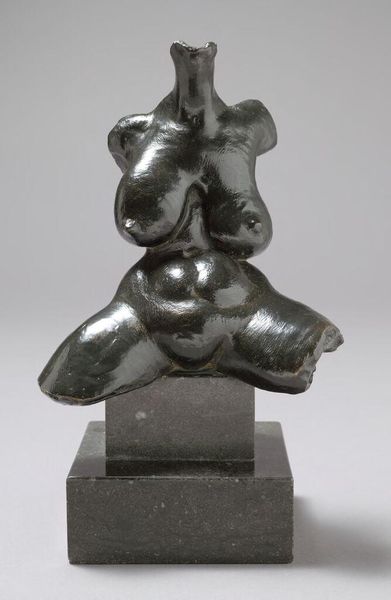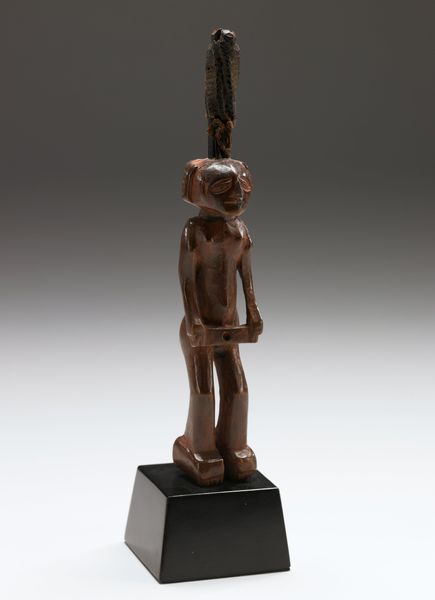
Dimensions: object: 432 x 229 x 229 mm
Copyright: CC-BY-NC-ND 4.0 DEED, Photo: Tate
Editor: Gaudier-Brzeska's "Red Stone Dancer" presents this compact, earthy figure. I find the geometric shapes intriguing, but also a bit…oppressive. What's your read on it? Curator: I see this piece as a rebellion against traditional sculpture, a bold statement on the female form and its objectification. Consider its context: early 20th century, rising feminism, and the avant-garde's fascination with non-Western art. Do you see how it challenges conventional beauty standards? Editor: I can see that push and pull now. The figure is powerful, but not in a conventionally pretty way. Curator: Exactly. It's about reclaiming agency. The dancer embodies strength, not just aesthetic appeal, a forceful comment on the representation of women. Editor: This really shifts how I see it. It's not just about form, but about a cultural conversation. Curator: Precisely. It’s a call to deconstruct expectations and celebrate the multifaceted nature of identity.
Comments
tatebritain 7 months ago
⋮
http://www.tate.org.uk/art/artworks/gaudier-brzeska-red-stone-dancer-n04515
Join the conversation
Join millions of artists and users on Artera today and experience the ultimate creative platform.
tatebritain 7 months ago
⋮
This small dancer offers a stark contrast to the fluid elegance of The Dancer, although it was made in the same year. Carved from a single block of stone, the contorted pose creates a sense of contained energy on the brink of release. Gaudier-Brzeska was inspired by modern dance, such as Igor Stravinsky’s ballet The Rite of Spring, which had provoked controversy for its ‘earthbound lurching and stomping’ when it premiered in 1913. The figure is reduced to a series of abstract geometric forms, with a triangle instead of a face. Gallery label, September 2024
